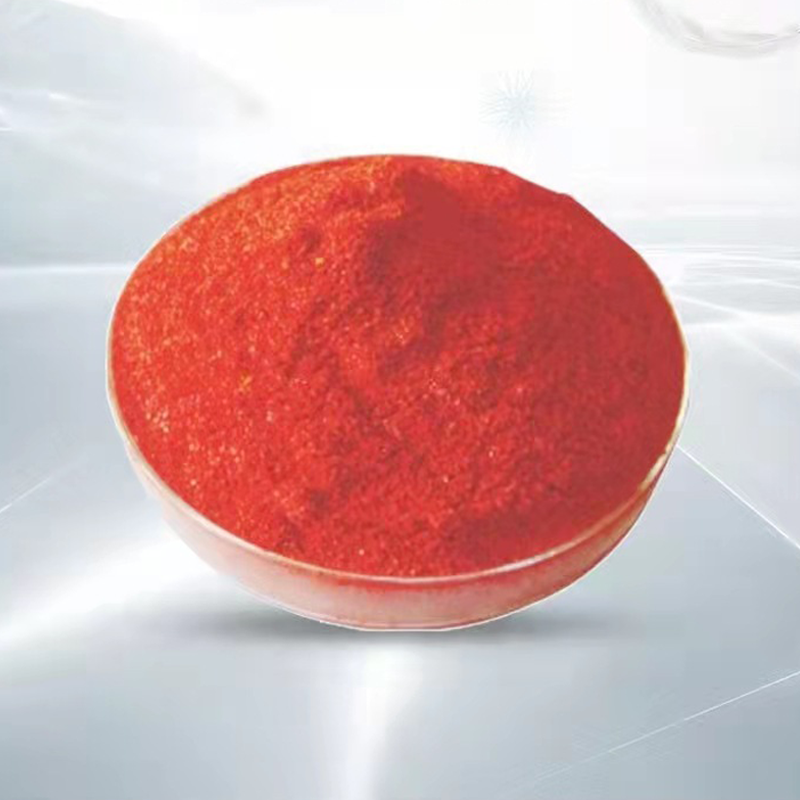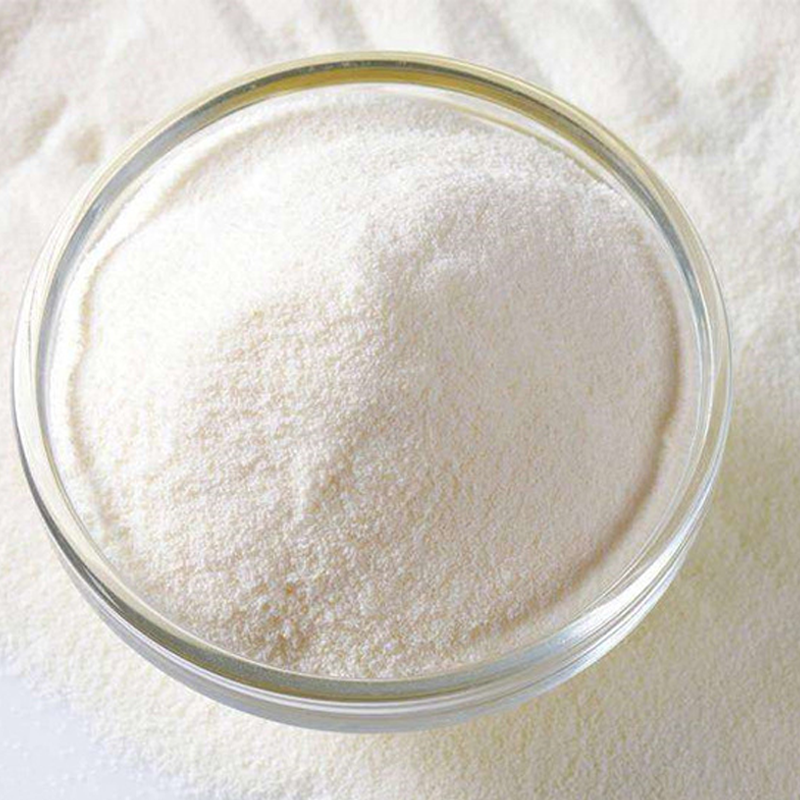
Plant Growth Regulator Chlormequat chloride CAS 999-81-5
Chlormequat chloride (CCC) is a plant growth regulator inhibiting the action of the gibberellic acid, resulting in shortening and strengthening of stems in plants and reduced branching and foliage in certain species of shrubs and trees.The product increases chlorophyll formation and root development, which increases crop yields.Mainly used in cereal cultivation, chlormequat treatment shortens stem length, thickens and strengthens plants to prevent lodging.
CasNo:999-81-5
Formula: C5H13Cl2N
Physical State: solid
Purity(%):
Application: Agricultura
Color: White
Formulation:50%Liquid,80%powder,and used to manufacturer more formulated product.
- Category: Plant Growth Regulator
It can enter plants through leaves, twigs, buds, roots and seeds, inhibit the biosynthesis of gibberellin in plants, control the excessive growth of plants, promote reproductive growth, shorten the internodes of plants, grow strong, develop root systems, and resist lodging. The leaf color deepens, the leaves thicken, the chlorophyll content increases, photosynthesis is enhanced, crop resistance is improved, quality is improved, and yield is increased.
Applications of Chlormequat choride
Used on cotton, wheat, rice, corn, tobacco, tomato, fruit trees and various root crops, it can resist lodging, promote crop growth, increase yield by 10% to 30%, and increase potato tubers. Can be used in saline and slightly acidic soils. It is widely used as a plant growth regulator. Its main function is to slowly inhibit the division of the lower part of the apex of various crops, resulting in thick stems, shortened internodes, shorter plants, developed root systems, widened and thickened leaves, dark green leaves, and a strong effect on flowers. , leaves and later growth without deformity.
Chlormequat choride can be used in most food and economic crops, vegetables, etc., such as corn, rice, tobacco, potato, tomato, and has a good effect of increasing production. Cotton is sprayed with 20-50 mg/L medicine for the second time at the bud stage, and wheat is sprayed with 0.15%-0.3% medicine solution, and the seeds are soaked for 6-12 hours. For sorghum, rice, soybean, tomato, etc., use 200-500 times of 50% water agent to spray in the suitable period.
Chlormequat choride is an excellent plant growth regulator, which can be used in crops such as wheat, rice, cotton, tobacco, corn and tomato, to inhibit the elongation of crop cells, but not to inhibit cell division, which can make plants shorter and stems shorter. Thick, leaves turn green, can make crops resistant to drought and waterlogging, prevent crops from growing excessively and lodging, resist salinity and alkali, prevent cotton from dropping bolls, and increase potato tubers.
How to use Chlormequat choride
Chlormequat choride is an antagonist of gibberellin, which can enter the plant through leaf twigs, buds, roots and seeds. The mechanism of action is to inhibit the biosynthesis of gibberellin in the plant. Its physiological function is to control the excessive growth of the plant, promote reproductive growth, shorten the internode of the plant, grow short, strong, thick, develop the root system, resist lodging, and deepen the leaf color at the same time 1. Thickened leaves, increased chlorophyll content, enhanced photosynthesis, increased fruit set rate of some crops, improved quality, and increased yield.
(1) The use of Chlormequat choride in cotton can inhibit the excessive growth of cotton, increase buds and protect peaches. Use 2 milliliters of 50% Chlormequat choride aqua per mu, mix with water and spray evenly. For cotton fields with excessive growth or high density, spray the pesticide twice, the first time at the initial flowering stage, and the second time at the full flowering stage. In the cotton fields without excessive growth in the early stage, spraying is not required at the bud stage, and spraying only once before the closure can save the attention and reduce autumn buds, which is equivalent to chemical pruning.
(2) To prevent the wheat from lodging, use 25-50 ml (0.5-1 tael) of 50% Chlormequat choride per acre before the winter wheat turns green and joints, or when the spring wheat starts jointing, spray it evenly with water. It is required to spray twice. Yield-increasing effect can resist lodging, increase tillering, promote the differentiation of young panicles, increase the number of panicles, grain weight and thousand-grain weight. (3) To prevent rice lodging, use 300 times of 50% Chlormequat choride water solution to spray once at the end of rice tillering, which can make rice grains plump and increase yield.
(3) For soybeans, spray 200-300 times liquid of 50% Chlormequat choride on soybean leaves, which can increase the number of beans and reduce pods, and can play the role of drought resistance, cold resistance, salt resistance and yield increase. .
(4) For corn, sorghum and millet, soak the seeds for 6 hours with 100 times of 50% Chlormequat choride water solution, remove and dry in the shade for sowing.
(5) For potatoes, spray 200-300 times of 50% Chlormequat choride solution on the leaves to increase yield and improve stress resistance.
(6) For apple saplings, spray with 0.5% to 1.5% concentration of 50% Chlormequat choride water solution, from early July to early August, spray once every 15 days, and spray 3 times in total, which can promote new shoots Thickened, shortened internodes, dark green leaves, thickened and widened leaves, enhanced cold resistance, and conducive to safe overwintering.
(7) For grapes, spray with 50% Chlormequat choride water solution 500 times, which can inhibit the growth of auxiliary shoots, promote fruit order, and increase fruit setting rate and fruit weight.
Precautions for Chlormequat choride
1 The water and fertilizer conditions are good, and the effect is better when the population has a tendency to grow excessively, but the soil conditions are poor and the growth is not vigorous, and Chlormequat choride cannot be used.
2 Ingestion of 50% Chlormequat choride water by mistake can cause poisoning. General first aid measures and symptomatic treatment can be used for the poisoned person. Those with obvious muscarinic symptoms can be treated with atropine.
3 Chlormequat choride is slightly toxic to humans and animals, so it cannot be stored together with food, and should be stored in a cool and ventilated place.
4 Generally, cotton or wheat without excessive growth tendency should not be used. Cotton medication should not be too early or too high, so as not to inhibit the plants too much or too early and affect the normal growth. Spraying wheat should not be too late, so as not to inhibit growth and affect yield.
5 It can be mixed with 1605 and dimethoate, but not with alkaline drugs.
Package of Chlormequat choride
We also supply some accessories to add more functions for end-users' convenience, which also help our distributors and business partners sell our products in their area. Any special package requirements, please don't be hesitate to tell us.
Large Package:
Solid: 25Kg UN approved fiber drums with LDPE liner;
Liquid: 200L UN approved HDPE or iron drums.
Retail Package:
Solid: 10g;50g;100g;500g;1kg;5kg;25kg
Chlormequat choride suppliers
Agripestcide is a professional agrochemical chemical manufacturer supplying high quality and effective plant growth regulator Chlormequat choride with high quality and good service. If you are looking for Plant Growth Regulator Chlormequat choride, please feel free to contact us for the latest price.
Name | Chlormequat chloride |
Formula | C5H13Cl2N |
Molecular Weight | 158.07 |
EINECS N0. | 213-666-4 |
Melting Point | 239-243 °C (dec.)(lit.) |
Boiling Point | 260.3°C (rough estimate) |
Physical State | solid |
Color | White |
Purity | |
Package | 25kg Cardboard barrel |
Application | Agricultural |
Storage | Ventilation low temperature drying |
Sample | Available |
EXP | 2 years |
Send an Inquiry
Your email address will not published. Required fieled are marked.
Related Products
Check out other related Products






